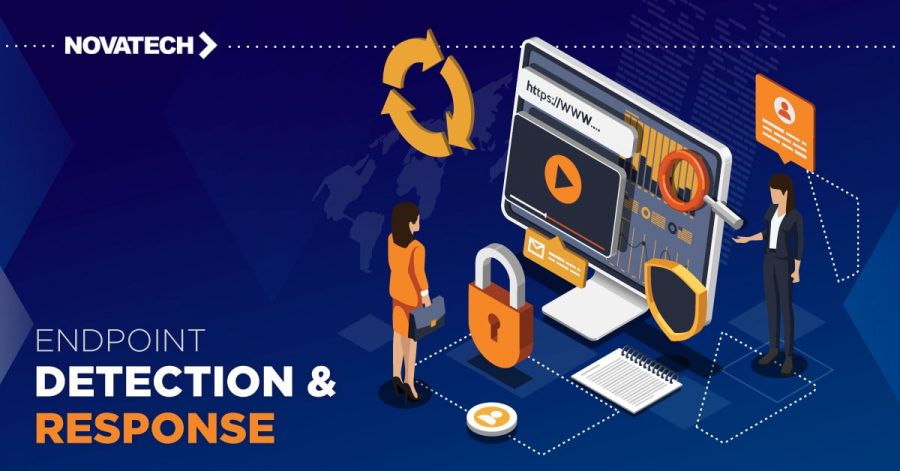Department collaboration: We’re in this together
4 min read

Daniel Conway
In IT, we’re no stranger to the “us-versus-them” mentality. It’s not rare for us to become isolated—a decision that may be self-inflicted in some cases—so department collaboration can feel like a complete mystery. This isolation can crop up for several reasons, like for security purposes or due to cultural issues. For instance, employees outside your IT team may not understand the business value of IT beyond their incredible problem-solving abilities.
But, in today’s world, we can do more than solve tickets. In fact, we can directly contribute to the business’s bottom line. IT has become core to business strategy and decision making, and the technology we choose to implement can literally transform a business.
In other words, IT has become a true game-changer, and in competitive industries, those who leverage technology the best will win. With that said, you and your IT team can’t do everything alone. Learning how to collaborate across departments is essential for enhanced security, increased efficiency, and more. So, buckle up and get ready to take some notes about how you can build stronger relationships across your company.
Partnerships create secure environments
Security is a huge issue across the board in IT today. We all know the cost of a security breach, and how a malicious attack can overwhelm and create chaos within an organisation. This is why early detection and prevention is a must. If you need a reminder, think of the Sony hack and all the internal information that was leaked out. As reported by Fortune, lax security and persistent malware perpetrated for years allowed this catastrophic failure to happen. It was almost a death knell for Sony, and if that’s the case for a company that size, imagine the repercussions of a hack on a smaller business.
Closer to home, there have also been several internet security breaches in Singapore, including the February 2017 cyberattack on the Ministry of Defence (MINDEF), which resulted in the theft of personal data of 850 national servicemen and employees. It could’ve been worse—luckily, a physical and multi-layered separation of MINDEF’s I-net system from internal systems prevented attackers from accessing classified military information.
Prevention can go a long way in securing your business. But to create a responsive defence, you need to first strengthen any weak links. Make sure you identify any and all security risks—and check for them in unexpected places, like the print environment. Your fellow employees may not realise that printing confidential documents on wireless printers can mean that private information may fall into the wrong hands.
To eliminate this risk, you can turn to more advanced and more secure printing solutions, while also educating users on the dangers within the print environment. Don’t be afraid to ask members outside your IT team to participate in similar trainings. After all, everyone needs to be aware of phishing, non-company device policies, and two-factor authentication, among other security concerns.
Why? While having more secure technology solutions in place will certainly help, employees are the first line of defence, and if they know what to watch out for, you can better protect your business as a whole. It’s your job to spark this conversation, and collaboration technology tools—like unified communications tech that offers videoconferencing and chat tools—can certainly help in keeping team members across departments aware of these issues.
Competing is always a team effort
On a more technical level, many companies are adopting a digital-first strategy, which heavily relies on IT, to set themselves apart from the competition. The terminology is used so often that it’s worn out, like a childhood pillow, leaving many confused about what exactly “digital-first” means. In short, the key differentiator is in creating an experience that can adapt to any format—without a noticeable difference in quality.
In other words, consider your business’s website: The website may look great on a desktop computer, but how does the website change when viewed on mobile? The goal is to adapt the web experience so it’s just as fulfilling and easy-to-use on both forms of media. This is where IT plays a vital role—their goal is to ensure a seamless experience across all platforms, especially from the technology perspective.
To do so successfully, you’ll need to communicate cross-departmentally to make sure everything works—from setting up ads that accurately display across devices to ensuring the security of any financial transactions (for an e-commerce store, for instance). When customers interact with your business on a digital medium, the tech should just work.
What doesn’t work? Individual fiefdoms and isolated departments. Your organisation needs to act as one team and adopt a holistic approach to departmental collaboration to succeed and compete in their space. With everybody working together, your IT team can solve more cross-functional problems through technology. For instance, newer collaboration tools, like Slack, can aid in the quest for better communication and a tighter team focus.
If you rally for this type of change to department collaboration, you’ll really begin to see the positive effects it will have on your IT team and the business as a whole—including a more secure IT environment and a cohesive approach to digital transformation. Contact the Managed IT team at Novatech for an assesment today: 800.264.0637 or online Novatech.net



